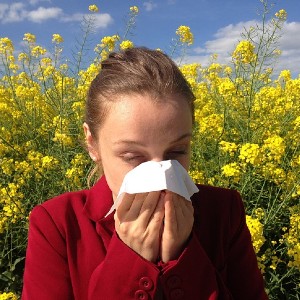 Smart Citations
Smart CitationsSee how this article has been cited at scite.ai
scite shows how a scientific paper has been cited by providing the context of the citation, a classification describing whether it supports, mentions, or contrasts the cited claim, and a label indicating in which section the citation was made.
A multicomponent nutraceutical (Perilla frutescens, quercetin, and vitamin D3) as add-on therapy in patients with grass pollen-induced mild persistent asthma and rhinitis
Background Allergic asthma is an inflammatory disease characterized by a type 2 immune response. Pollens are a common cause of seasonal asthma. Allergic rhinitis (AR) frequently associates with asthma. The treatment usually aims at controlling inflammation and relieving symptoms. Inhaled corticosteroids are the most effective controller and short-acting b2-agonists (SABA) as a reliever for asthma. Oral antihistamines and nasal corticosteroids (NC) are the mainstays for AR. A multicomponent nutraceutical containing perilla, quercetin, and vitamin D3 significantly prevented AR exacerbations in children. Thus, the current study explored the add-on use in adult patients with mild persistent asthma and AR due to grass pollen allergy.
Methods The treatment lasted three months. Asthma and AR symptoms, asthma control test, spirometry, nasal eosinophils, and use of rescue medications (SABA and NC) were evaluated in the previous grass season and throughout the treatment. All patients were treated with ciclesonide (320 mcg/day) and cetirizine (10 mg/day). Patients were randomly stratified into Group A, taking the nutraceutical, and Group B using the predetermined therapy.
Results 90 patients (13-59 years old) were enrolled, and 84 completed the trial. Group A significantly improved all outcomes (p<0.001). Group B did not achieve an improvement in AR symptoms, nasal eosinophils, and nasal steroid use. The intergroup analysis showed that Group A patients experienced less severe bronchial symptoms (- 32 %), AR symptoms (- 39 %), better asthma control (+ 38 %), higher FEV1 (+ 10 %), lower SABA (- 30 %) and NC use (- 41 %), and nasal eosinophils count (- 35 %) than Group B (p<0.0001 for all).
No clinically relevant adverse events occurred.
Conclusion A multicomponent nutraceutical containing perilla, quercetin, and vitamin D3, as an add-on treatment to inhaled ciclesonide and cetirizine, provided a clinically relevant benefit in patients with mild persistent asthma and AR due to grass pollen uncontrolled by standard therapy.
Downloads
How to Cite

This work is licensed under a Creative Commons Attribution-NonCommercial 4.0 International License.
PAGEPress has chosen to apply the Creative Commons Attribution NonCommercial 4.0 International License (CC BY-NC 4.0) to all manuscripts to be published.

 https://doi.org/10.4081/jbr.2023.11146
https://doi.org/10.4081/jbr.2023.11146





